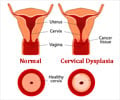The structure of the active form of E6-associated protein (E6AP), an enzyme that acts as a master regulator in the body, has been discovered by a team of scientists.

"Because the assembly of cells is like an elaborate tinker toy set in which the parts can be used in different combinations to serve various roles, E6AP normally functions in nerve cells to direct brain development and in a functionally related process termed neuronal plasticity which allows nerve cells to alter their patterns of communication with neighboring cells during learning," notes Arthur Haas, PhD, the Roland Coulson Professor and Chairman of Biochemistry and Molecular Biology at LSU Health Sciences Center New Orleans and Director of the laboratory in which the work was performed.
The research team included lead investigator Dr. Virginia Ronchi, a postdoctoral fellow, and her colleagues, Jennifer Klein and Dr. Daniel Edwards, all of whom work in Dr. Haas's laboratory at LSU Health Sciences Center New Orleans School of Medicine.
Inherited loss of E6AP function in the brain results in the mild to severe neurodevelopmental defects of Angelman Syndrome which occur in 1 in 10,000-20,000 births. Angelman Syndrome is a developmental condition characterized by severe mental retardation in children because the brain is unable to "learn" by adapting its nerve connections to outside stimuli. In contrast, other types of mutations that lead to increases in brain E6AP activity are thought to cause certain forms of inherited Autism Spectrum Disorder (ASD), suggesting that a carefully orchestrated balance of E6AP function is necessary for normal brain development.
Computer analysis identified a region of the molecule critical for forming the three-part structure, allowing the investigators to create a drug to block the assembly and activity of the enzyme. The computer analysis also demonstrated that several mutations associated with Angelman Syndrome result from defects in assembly of the three protein molecules.
In other studies reported in the paper, Dr. Ronchi and her colleagues show that the replication strategy of two forms of HPV associated with cervical cancer hijacks normal cells, directing them to make a viral protein called E6 that binds to E6AP at the point of assembly and that this feature of the viral protein's function could be used to reverse the molecular assembly defects of the Angelman Syndrome mutations. While not a cure for Angelman Syndrome, this work emphasizes the feasibility of future drug design to promote E6AP assembly as a potential therapy for some forms of the disease. It also provides a target for vaccine and drug development to prevent or treat cervical cancers caused by HPV by derailing cell transformation at the step of E6-E6AP binding.
Source-Eurekalert
 MEDINDIA
MEDINDIA




 Email
Email










